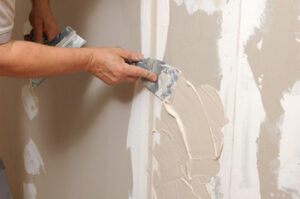A pest is any animal that spoils food, damages property or poses health risks to people. Prevention is key to controlling pests.
A good pest control company will identify infestation hot spots and create tailored treatment plans. When choosing a pest control company, look for one specializing in the types of pests you have a problem with. Contact Pest Control Irving TX now!

Identifying pests accurately is the first step in controlling them. Incorrect identification of a pest can result in misguided control measures and even greater harm to plants, people and animals. Identifying a pest is also the first step in an integrated pest management program (IPM) and helps ensure that only a necessary amount of toxic chemicals are used to control pests.
Pest identification can be difficult, as many pests have similar characteristics. Additionally, the appearance of a pest can change as it goes through different life stages. For example, immature beetles may look a lot like caterpillars or worms. Identifying the pest also requires taking into account other factors, such as the environment in which the pest is living and its behavior.
When a pest is identified, scouting and monitoring can take place. The information gained from this can help decide whether a pest can be tolerated, if the pest should be controlled and what methods are most appropriate for the situation. Monitoring is often done by observing the environment and looking for signs of pest presence such as damage, population densities and egg masses.
An excellent resource for learning how to identify pests is an online bug identification guide. This type of identification tool allows you to view a photograph of the pest, its characteristics and habits, and offers prevention and control measures. Some online resources provide a simple click-and-identify process, while others require the user to read about the pest in order to make a positive identification.
In IPM programs, steps are taken to conserve natural enemies of a pest when possible and only chemical controls are employed when the need is clear. When possible, these steps help to prevent the loss of valuable ecosystem services that are provided by insects, birds and other natural organisms.
Other important considerations in pest identification are understanding what a particular pest eats and how it reproduces. This can allow the user to remove the food sources that are attracting the pest and to prevent the propagation of the pest in new areas by removing the breeding sites.
Pest Prevention
When pests invade homes and businesses, they can cause structural damage and create health risks. Pest control strategies are designed to prevent or eliminate pest infestations and reduce their harmful impact on people, plants, pets and property. Pest prevention includes sanitation, exclusion and physical controls. A pest-free environment is necessary to protect health, safety and the environment. Pest prevention also involves the judicious use of pesticides when necessary to ensure effective management of pests.
A pest is any organism that causes economic or environmental damage. Pests may be plants, animals, or microorganisms. Indoor pests, such as cockroaches and mice, can damage building structures, wires and insulation. They can also contaminate food and food preparation surfaces with bacteria, fungus and other disease-causing organisms.
Indoor pests are more of a problem in urban areas than rural environments. The sanitary practices that are important in preventing and controlling outdoor pests can be equally effective in reducing indoor infestations. For example, good garbage collection and disposal practices can reduce the amount of organic matter available for pests to feed on. Garbage receptacles should be lined with metal or plastic to prevent rodents from accessing the contents. Cleanliness in food processing facilities can reduce the presence of pests and their droppings, which can contaminate food products and packaging materials.
Clutter provides places for pests to breed and hide. Physical pest control involves eliminating these hiding places by clearing cluttered spaces and sealing off entry points. Regular inspections and monitoring of pest activity are important in detecting problems early when they are easier to treat.
Predator species and natural parasites can help control some pest populations. Birds, reptiles, amphibians, fish and mammals feed on some pests, and their presence can suppress their populations. Pathogens, or organisms that cause disease in other organisms, can also suppress pests.
Chemical pest control is generally used to address severe pest infestations or when other treatments are ineffective or unavailable. The use of pesticides should always be guided by safety concerns for people, pets and the environment. Pesticides are available in a variety of forms, including sprays, baits and dusts.
Pest Control Methods
Pest control methods are the techniques and tools you use to manage or eradicate unwanted plants, animals, or organisms. They can include physical, biological, cultural, and chemical means of controlling pests. The goal is to achieve desired outcomes without harming people, property, pets, or the environment.
Physical pest control involves eliminating or preventing access to food, water, shelter, and other resources that support a pest population. This includes preventive steps like improving sanitation, removing waste and debris from the environment, fixing leaky plumbing, and reducing moisture around plants or structures. It also includes excluding or deterring pests from the area by blocking entry with barriers or traps.
Biological pest control uses natural enemies (parasites, predators and pathogens) to manage a target pest population. It may involve supplementing the native population of these organisms or introducing new ones to an area. It is not commonly used in outdoor pest situations, but it can be useful for controlling invasive species that threaten human health and safety.
Cultural pest control strategies reduce the conditions that favor pests, such as through good gardening practices, avoiding overwatering and overfertilizing, proper crop rotation, and using beneficial insects to help manage pests. These practices can also be effective in preventing some diseases caused by plant pathogens.
Chemical pest control uses chemicals to kill or repel targets. These can include insecticides, herbicides and fungicides. They can disrupt the nervous systems of pests, suppress their metabolism, or interfere with their reproduction. They are most common in agricultural settings, but can be used to control pests in homes and businesses.
Eradication of pests is a rare goal in outdoor pest management, but is more common in enclosed environments such as dwellings, schools, offices, and hospitals. It is most often attempted with invasive species such as the Mediterranean fruit fly, gypsy moth and fire ants.
Integrated pest management (IPM) is a comprehensive approach to pest control that integrates prevention, monitoring, cultural and biological controls, and when necessary, pesticide treatments. This is the best way to control pests and minimize damage to people, property, and the environment. If pesticides are used, they are selected and applied according to established guidelines to limit risks to humans and beneficial organisms.
Pesticides
A pesticide is any substance used to kill or control unwanted species of plants or animals. It can be natural or synthetic. Some examples are insecticides (insect killers), herbicides (weed or plant killers), fungicides (fungus killers) and rodenticides. Pesticides also include growth regulators, miticides, and products to kill snails and slugs.
All pesticides are regulated by federal, provincial and municipal governments through various acts, regulations, guidelines and directives. They can be divided into categories based on their toxicity to humans, mammals and the environment. Least-toxic pesticides are designed to have low LD50 ratings, quick biodegradability and little effect on non-target species. This group includes animal repellents such as Ropel and capsaicin-based sprays, moth crystals, limonene and DEET. Insecticidal dusts such as boric acid and diatomaceous earth also belong in this category.
When choosing a pesticide, read the label carefully to ensure that it is designed for the type of pest you wish to control and will not damage your plants or the environment. Avoid using sprays in areas that are easily accessible to children and pets. Instead, use baits, traps, or crack and crevice treatments.
If you do decide to use a pesticide, always follow the instructions on the label. Do not apply more than is instructed on the label; this can be harmful to people and the environment and may not control the pests you are targeting. In addition, evaluate the results of your pesticide use to make sure that it is working. If it is not, consider a different chemical or a non-chemical method of control.
Pesticides are often transported from fields to streams and rivers, where they can degrade water quality. They can also seep into groundwater supplies, contaminating drinking water. This makes it important to keep pesticides out of the water supply whenever possible.
If you are hiring a professional to apply pesticides, discuss your concerns about environmental effects with them. Also, ask them to describe their methods of control and the chemicals they are using. Write down their name and the EPA registration number so you can get more information if necessary.

